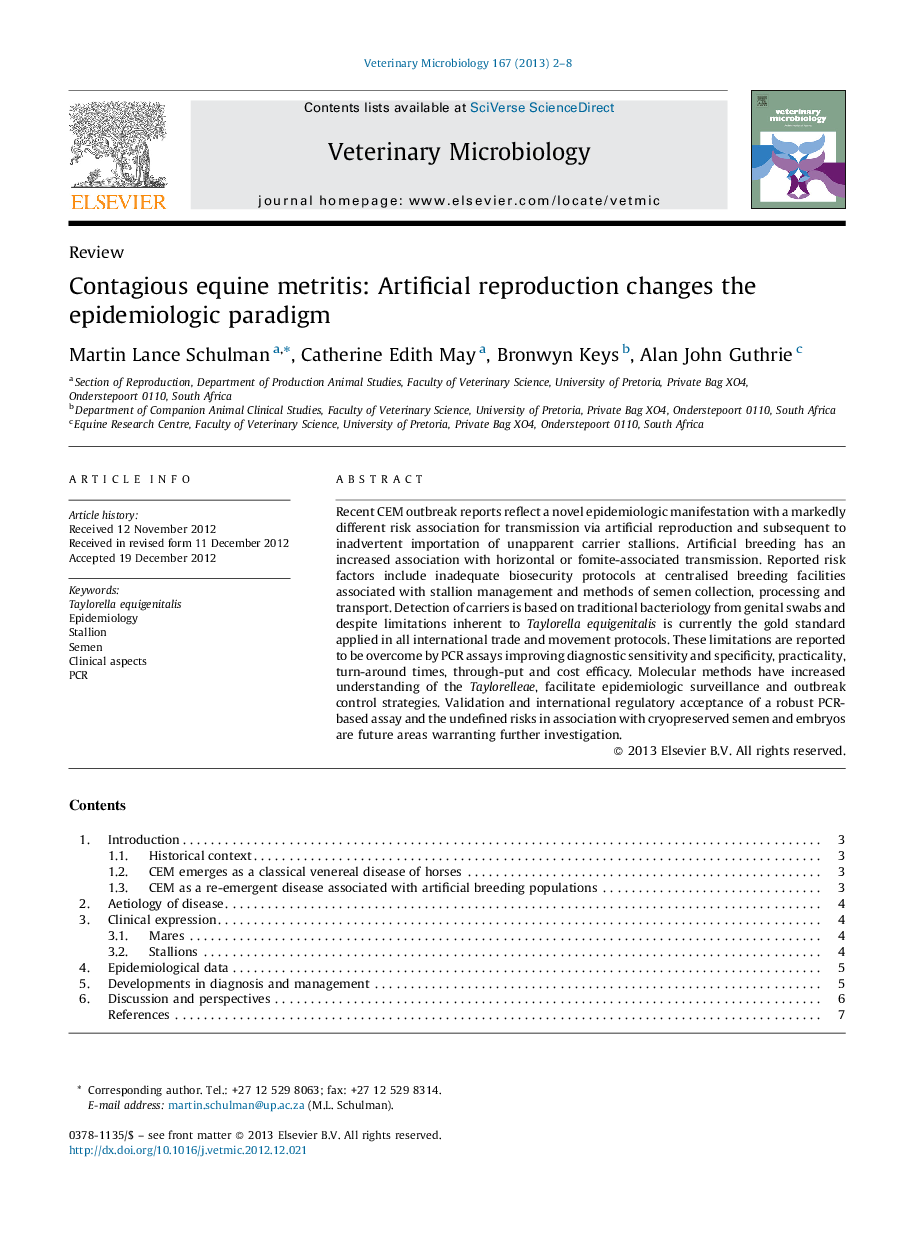| Article ID | Journal | Published Year | Pages | File Type |
|---|---|---|---|---|
| 2466638 | Veterinary Microbiology | 2013 | 7 Pages |
Recent CEM outbreak reports reflect a novel epidemiologic manifestation with a markedly different risk association for transmission via artificial reproduction and subsequent to inadvertent importation of unapparent carrier stallions. Artificial breeding has an increased association with horizontal or fomite-associated transmission. Reported risk factors include inadequate biosecurity protocols at centralised breeding facilities associated with stallion management and methods of semen collection, processing and transport. Detection of carriers is based on traditional bacteriology from genital swabs and despite limitations inherent to Taylorella equigenitalis is currently the gold standard applied in all international trade and movement protocols. These limitations are reported to be overcome by PCR assays improving diagnostic sensitivity and specificity, practicality, turn-around times, through-put and cost efficacy. Molecular methods have increased understanding of the Taylorelleae, facilitate epidemiologic surveillance and outbreak control strategies. Validation and international regulatory acceptance of a robust PCR-based assay and the undefined risks in association with cryopreserved semen and embryos are future areas warranting further investigation.
